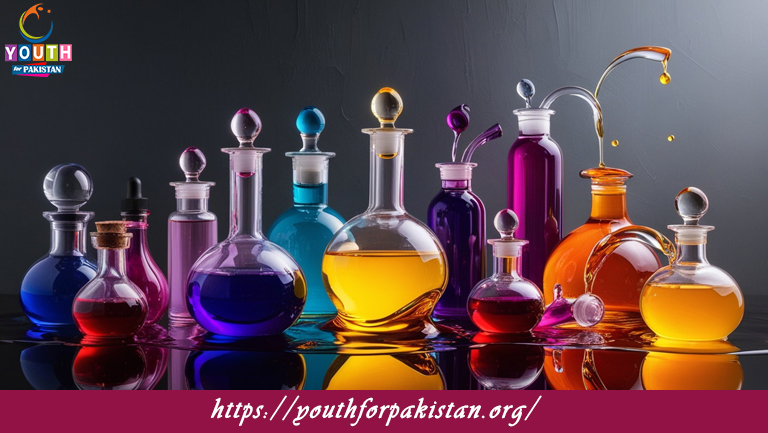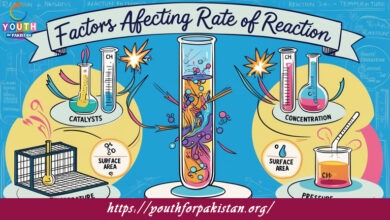Properties Of Liquids MDCAT MCQs with Answers

Welcome to the Properties Of Liquids MDCAT MCQs with Answers. In this post, we have shared Properties Of Liquids Multiple Choice Questions and Answers for PMC MDCAT 2024. Each question in MDCAT Chemistry offers a chance to enhance your knowledge regarding Properties Of Liquids MCQs in this MDCAT Online Test.
Which property of liquids describes their ability to flow and take the shape of their container?
a) Viscosity
b) Surface tension
c) Density
d) Fluidity
What is the term for the resistance of a liquid to flow?
a) Viscosity
b) Surface tension
c) Capillarity
d) Density
The property of a liquid that allows it to rise in a narrow tube against gravity is known as:
a) Viscosity
b) Surface tension
c) Capillarity
d) Density
Which of the following factors does not affect the viscosity of a liquid?
a) Temperature
b) Pressure
c) Molecular weight
d) Surface area
The measure of the cohesive forces acting at the surface of a liquid is called:
a) Viscosity
b) Surface tension
c) Capillarity
d) Fluidity
Which property is responsible for the formation of droplets of liquid?
a) Viscosity
b) Surface tension
c) Density
d) Fluidity
Which of the following liquids has the highest surface tension?
a) Water
b) Alcohol
c) Mercury
d) Acetone
What happens to the viscosity of a liquid as temperature increases?
a) It decreases
b) It increases
c) It remains constant
d) It first increases, then decreases
Which property of liquids is directly related to the height to which a liquid will rise in a capillary tube?
a) Viscosity
b) Surface tension
c) Density
d) Cohesion
Which of the following affects the density of a liquid?
a) Temperature
b) Viscosity
c) Surface tension
d) Capillarity
What is the term for the phenomenon where a liquid tends to minimize its surface area?
a) Capillarity
b) Viscosity
c) Surface tension
d) Fluidity
The ability of a liquid to flow easily is called:
a) Surface tension
b) Viscosity
c) Fluidity
d) Cohesion
In which type of liquid will you find higher viscosity at a given temperature?
a) A liquid with smaller molecules
b) A liquid with larger molecules
c) A liquid with lower molecular weight
d) A liquid with higher temperature
What happens to the surface tension of a liquid when an external substance is added that lowers the cohesive forces among the liquid molecules?
a) It increases
b) It decreases
c) It remains constant
d) It becomes zero
Which property of liquids determines the rate at which a liquid evaporates?
a) Surface tension
b) Viscosity
c) Cohesion
d) Vapor pressure
Which of the following will increase the rate of evaporation of a liquid?
a) Decreasing the surface area
b) Increasing the temperature
c) Decreasing the pressure
d) Increasing the viscosity
The phenomenon where liquid molecules escape from the surface of a liquid is known as:
a) Condensation
b) Boiling
c) Evaporation
d) Sublimation
Which factor does not affect the rate of evaporation of a liquid?
a) Temperature
b) Surface area
c) Atmospheric pressure
d) Density
Which of the following liquids would have the highest vapor pressure at room temperature?
a) Water
b) Alcohol
c) Mercury
d) Glycerin
The phenomenon where liquid turns into vapor below its boiling point is called:
a) Sublimation
b) Evaporation
c) Condensation
d) Freezing
What does the term ‘viscosity’ refer to in liquids?
a) The ability to resist flow
b) The tendency to form droplets
c) The force of cohesion
d) The rate of evaporation
Which of the following will decrease the viscosity of a liquid?
a) Lowering the temperature
b) Increasing the molecular size
c) Adding more solute
d) Increasing the temperature
Which property of liquids helps in forming meniscus in a glass tube?
a) Surface tension
b) Viscosity
c) Density
d) Cohesion
Which of the following will exhibit the highest surface tension?
a) Water
b) Mercury
c) Ethanol
d) Benzene
When a liquid is placed in a narrow tube and rises due to adhesion to the tube and cohesion of the liquid molecules, this is known as:
a) Viscosity
b) Capillarity
c) Surface tension
d) Fluidity
The process by which a liquid turns into a gas at the surface without boiling is called:
a) Boiling
b) Sublimation
c) Condensation
d) Evaporation
Which property of liquids allows them to have a specific shape in a container but not a definite volume?
a) Density
b) Fluidity
c) Surface tension
d) Viscosity
The temperature at which a liquid’s vapor pressure equals the external pressure is known as:
a) Freezing point
b) Boiling point
c) Melting point
d) Condensation point
Which of the following properties is directly related to the cohesive forces in a liquid?
a) Viscosity
b) Surface tension
c) Density
d) Vapor pressure
Which type of intermolecular force is primarily responsible for the high boiling point of water?
a) London dispersion forces
b) Dipole-dipole interactions
c) Hydrogen bonding
d) Ionic bonding
Which property of a liquid would likely increase with increasing molecular size and mass?
a) Surface tension
b) Viscosity
c) Vapor pressure
d) Fluidity
What is the effect of increasing the temperature on the vapor pressure of a liquid?
a) It decreases
b) It increases
c) It remains constant
d) It becomes zero
The ability of a liquid to spread over a surface depends on its:
a) Viscosity
b) Surface tension
c) Density
d) Capillarity
Which of the following is not a property of liquids?
a) Definite shape
b) Surface tension
c) Fluidity
d) Viscosity
Which factor does not affect the surface tension of a liquid?
a) Temperature
b) Presence of surfactants
c) Molecular size
d) Pressure
The rise or fall of a liquid in a capillary tube depends on:
a) The surface area of the tube
b) The temperature of the liquid
c) The balance between adhesive and cohesive forces
d) The density of the liquid
Which liquid will exhibit the lowest viscosity at a given temperature?
a) Honey
b) Glycerin
c) Water
d) Syrup
Which of the following properties describes a liquid’s ability to resist being stretched or deformed?
a) Viscosity
b) Surface tension
c) Capillarity
d) Fluidity
The change in volume of a liquid with temperature is known as:
a) Thermal expansion
b) Surface tension
c) Capillarity
d) Cohesion
Which property of liquids affects the height to which they can be drawn up in a capillary tube?
a) Viscosity
b) Density
c) Surface tension
d) Temperature
If you are interested to enhance your knowledge regarding Physics, Chemistry, Computer, and Biology please click on the link of each category, you will be redirected to dedicated website for each category.





